Blog
Cricket One Day Internationals- All You Need to Know

Picture yourself immersed on a sunny afternoon, witnessing the thrill of a cricket match that concludes within a single day. That’s the beauty of One Day International cricket or ODI. It’s a dynamic, unpredictable and intense version of the classic sport. Unlike Test cricket which spans over five days, an ODI brings the excitement, suspense and sense of competition all packed into a single day’s play.
Cricket is one of the world’s most popular sports, and One Day Internationals (ODIs) have played an important part in its growth. So, what exactly are one-day internationals in cricket? ODIs are a type of limited-overs cricket played between international sides. Each side has 50 overs to play, and the team with the highest score wins the game. ODIs are popular among fans due to their fast pace, excitement, and high scoring.
Key Takeaways
- One Day Internationals (ODIs) are a limited-overs format of cricket played between international teams.
- ODIs are known for their pace, excitement, and high-scoring matches.
- Each team plays a maximum of 50 overs, and the team with the highest score wins the game.
Evolution of ODI Format
You might find it hard to imagine but there was a time when the fast-paced, adrenaline-pumping One Day International (ODI) cricket format was not even in existence. The evolution of ODI cricket format marks a significant milestone in the history of cricket.
A. Introduction of limited-overs cricket
This chronicle begins when the lovers of cricket yearned for a shorter, more dynamic version of the test match. Born out of this desire, limited-overs cricket debuted in the 1960s in England, initially in domestic circles. The main aim was to provide a completed game that lasted just a single day.
B. First ODI match and its significance
The first-ever ODI match was a sort of “accident”. It took place on 5th January 1971, between Australia and England at Melbourne Cricket Ground (MCG). Initially slated as a Test match, it was transformed into an ODI due to consistent rain delays.
The significance of this match cannot be overstated as it marked the beginning of an era where the sport could reach a larger audience who preferred shorter games brimming with excitement.
C. Development of rules and regulations
After seeing its appeal, the International Cricket Council (ICC) took steps to formalize rules and regulations for this new version of the game. Structures evolved with each passing series – varying numbers of overs were tried before settling on 50 overs per innings; colored team uniforms were introduced; matches were scheduled under lights as day-night matches gained popularity.
Gradually, numerous transformations such as powerplays (which provide additional scoring opportunities), Duckworth-Lewis method (to adjust targets in case of interrupted matches), and Super Over (for deciding tied matches) were introduced to further jazz up ODIs.
Features of limited-overs cricket
Compared to Test cricket, limited overs cricket has several features that make it more exciting and appealing to fans. Some of these features include:
- A limited number of overs per side, typically 50 overs in ODI cricket, which leads to more attacking and aggressive playing styles.
- Fielding restrictions and powerplays, which require teams to strategize their gameplay and take risks to score runs.
- Tiebreaker rules to ensure a result in case of a tied match, such as Super Overs or the Duckworth-Lewis method.
One-Day Internationals have become a big part of the international cricket schedule and continue to give fans all over the world exciting and exciting games to watch.
Key Features of ODI Matches


Credit: GettyImages
One Day International cricket, commonly referred to as ODI, can be an exhilarating form of the beloved sport you love. It amalgamates the thrill and pace of T20 cricket with some of the strategic depth of Test matches. Let’s delve into some of these key features that make ODI matches a spectacle.
A. Duration and overs per side
An ODI match is structured to consist of two innings, each capped at 50 overs. Imbued with a perfect balance of pace and strategy, this framework is ideal for cricket fans that enjoy brisk action padded with periods of tense, tactical maneuvering. You’ll find the length permits the batsmen not only to build their innings cautiously but also to engage in aggressive shot-making.
B. Powerplays and fielding restrictions
Don’t forget about powerplays! They play a crucial role in shaping the outcome of an ODI match. A feature that transforms the dynamics of gameplay, powerplays witness more attacking cricket because fielding restrictions limit the number of fielders allowed outside the 30-yard circle. During this phase, you’ll see batsmen commanding aggression to capitalise on the scoring opportunities.
C. Role of Duckworth-Lewis method in rain-affected matches
Now, if you’re wondering what happens when an ODI match is interrupted by weather conditions, here’s where the Duckworth-Lewis method comes into play. This mathematical solution calculates an adjusted target for the team batting second in a rain-affected match. It does so based on statistical justice for both teams, considering factors like how many wickets are remaining and how many overs are yet to be bowled. Many a time, this method has resulted in tightly contested finishes to matches that otherwise could have ended prematurely due to downpour.
So there you have it – an outline of some of the aspects that make One Day International cricket games appealing to every cricket fan out there. Whether it’s striking a balance between defense and attack on the field or shifting pressure between innings, ODI cricket gives endless entertainment via equal parts strategy and skill! Remember these details the next time you watch a game to have a greater appreciation for it.
D. Rules and Format of ODI Cricket
Have you ever wondered about the rules and regulations of One Day Internationals? Here’s a breakdown of the format and what to expect from an ODI cricket match.
One Day Internationals, as the name suggests, is a limited overs cricket format played between international teams. Each team plays a fixed number of overs, typically 50, and the team with the highest score at the end of their innings wins the match.
| Aspect | Details |
|---|---|
| Number of Overs | Each team plays 50 overs, split into two innings of 25 overs each. |
| Fielding Restrictions | Only two fielders are allowed outside the 30-yard circle during the first 10 overs of each innings. In the remaining 40 overs, a maximum of five fielders are allowed outside the circle. |
| Powerplays | Each team can take two powerplays during their innings, during which the fielding restrictions are further relaxed. |
| Tie-breakers | If the scores are tied at the end of the match, a Super Over is played to determine the winner. If the Super Over also ends in a tie, the match is declared a tie. |
In the event of a rain delay, the Duckworth-Lewis Rule is used to modify the goal score for the side batting second. This strategy considers the run rate at the moment of the interruption as well as the number of overs left.
RELATED: What is Wide Ball In Cricket?
ODI Tournaments and Series


Image: iStock
One Day Internationals are a source of entertainment. Also provide an opportunity for international cricket teams to compete against each other in series. These tournaments give players a chance to showcase their skills and represent their nation on a stage.
The ICC Cricket World Cup, which takes place every four years is the one day ODI) competition, in the world. It brings together the cricket teams from around the globe to vie for the title of World Champions. Another notable event is the ICC Champions Trophy held every four years, where the top eight ODI nations compete in a knockout style tournament.
Bilateral ODI series involving two countries are quite common in cricket. These series usually consist of three to five matches. Can be hosted in either country or at a venue. Some anticipated ODI series include India vs. Pakistan, Australia vs. England and South Africa, vs. New Zealand.
Two other noteworthy ODI tournaments are the Asia Cup, featuring countries and the Caribbean Premier League which’s a franchise based event held in the West Indies.
These tournaments offer cricket enthusiasts the chance to witness matches featuring some of the players, in the world.
The popularity of ODI Cricket
Cricket enthusiasts from over the world get incredibly excited about One Day Internationals (ODIs). ODIs are exhilarating to watch due to their scoring nature and fast paced gameplay. As any cricket fan would know the outcome of an ODI can change dramatically from one day to another.
An ODI match always keeps you on the edge of your seat whether its because of a nail finish or a record breaking performance. That’s why both ardent followers of cricket and newcomers to the sport enjoy watching One Day Internationals.
For cricket governing bodies and broadcasters ODIs play a role in generating revenue. The ICC Cricket World Cup and other major ODI tournaments attract millions of viewers turning cricket into an industry. Thanks to its appeal ODI cricket receives substantial funding through television rights and sponsorships.
The style of One Day Internationals continues to captivate fans with its popularity and excitement. Whether its supporting their team or witnessing historic moments cricket fans, around the globe simply can’t get enough of ODIs.
ODI Rankings
One of the interesting things about One Day Internationals is that teams are ranked based on how well they play. The International Cricket Council (ICC) keeps track of how each team ranks based on how they do in ODI matches.
Each team gets a grade based on how they’ve done in the last three to four years, with more weight given to their most recent games. The ranks take into account things like the power of the opponent, how the match went, and how much of a win or loss there was.
Teams are proud to be named high in ODI cricket because it shows how consistent and good they are at the game. The top team in One-Day International (ODI) cricket has the prestigious title of “World Number One,” which is a big deal in the world of cricket.
At the moment, England is the best ODI team. India and New Zealand are second and third, respectively.
ODI vs. Test Cricket
If you’re a cricket fan, you’ve probably wondered what the differences are between Test cricket and One Day Internationals. The two formats are vastly different, and each has its own unique set of challenges.
Test Cricket


Wikimedia
Test cricket is the traditional format of the game and is played over a period of five days. Each team gets to bat and bowl twice, and the team that scores the most runs over both innings wins. The scoring rate is generally slow, and patience and endurance are important qualities for success in this format.
One Day Internationals
In contrast One Day International (ODI) cricket is played within a day and consists of two innings, each comprising 50 overs. The scoring rate tends to be higher necessitating a balance between aggression and caution. Teams must ensure they score runs while protecting their wickets.
The fielding restrictions in ODI cricket make it more demanding than Test cricket. During the 10 overs only two fielders are allowed outside the 30 yard circle. In the remaining 40 overs five fielders can be positioned outside the circle. These rules encourage attacking play and lead to scores.
Due to the number of overs in ODIs teams must exercise caution, with their wickets and cannot afford to waste too many balls. This often creates pressure situations and thrilling finishes.
Both formats require skill sets and not all players excel equally in both formats. While Test cricket tests endurance and patience ODI cricket rewards aggressiveness and quick decision making.
Overall both formats possess their unique appeal. Cricket enthusiasts can derive enjoyment from each format for reasons.
RELATED: What Is Stump Out In Cricket?
Impact of T20 Cricket on ODI Format
The significance and popularity of One Day Internationals have been called into doubt with the advent of Twenty20 (T20) cricket. Because of the fast-paced and exciting character of T20 matches, the relevance of ODIs has declined in several circumstances. To compete with T20 cricket, ODI cricket has introduced innovations such as powerplays and variable fielding limits to keep the game entertaining.
Despite the difficulties created by T20 cricket, One Day Internationals continue to be an important component of the international cricket calendar. When opposed to T20 matches, the chance to exhibit diverse skill sets and plans over a longer length of time provides ODI cricket a more thorough evaluation of a team’s strengths.
The success of the Indian Premier League (IPL) and other T20 leagues has raised worries about the influence on classic cricket forms such as ODIs. The Indian cricket squad, on the other hand, has demonstrated its prowess in both ODI and T20 cricket, establishing a balance between the two forms.
Adapting to Stay Relevant
One Day Internationals have faced criticism for their repetitive schedule and lack of innovation. In response, the International Cricket Council (ICC) has introduced changes to the ODI format, such as reducing the number of overs from 50 to 40 in 2007, and further to 20 in 2021.
ODI cricket has also adopted the Decision Review System (DRS) and the Duckworth-Lewis method to ensure that matches are fair and uninterrupted, even in the case of rain. These changes reflect a willingness to adapt and improve the format to ensure its longevity in the face of evolving cricket trends.
Celebrating ODI Cricket
Despite the concerns surrounding the impact of T20 cricket One Day Internationals (ODIs) still manage to captivate an audience and generate substantial revenue through television rights and sponsorships. The ICC Cricket World Cup, which is considered the pinnacle of ODI tournaments attracts millions of viewers. Holds a prominent place in the cricketing calendar.
Throughout cricket history ODI matches have witnessed some thrilling and unforgettable moments. Take, for instance the intense 2019 World Cup final between England and New Zealand that was ultimately decided by a super over. Not to mention cricketers like Sachin Tendulkar, who astonished us all with his record breaking 200 runs in an ODI match or todays stars like Virat Kohli who continue to set multiple ODI records. It is undeniable that One Day Internationals offer a source of excitement and remarkable achievements within the world of cricket.
In conclusion despite the challenges posed by Twenty20 cricket and other innovative formats within the sport One Day Internationals remain an exhilarating component of international cricket. Adapting to changing times and embracing innovation are vital in ensuring that ODI cricket remains relevant and enjoyable for fans, around the globe.
Famous ODI Players


Sachin Tendulkar’s
Over the years, One Day Internationals have seen some of the most iconic and legendary cricketers dominating the field. From their records to their contributions to the format, these players have enthralled cricket fans across the world. Below are some of the most famous ODI players in the history of cricket.
| Player | Country | Matches Played | Runs Scored | Wickets Taken |
|---|---|---|---|---|
| Sachin Tendulkar | India | 463 | 18,426 | 154 |
| Ricky Ponting | Australia | 375 | 13,704 | 3 |
| Virat Kohli | India | 254 | 12,169 | 4 |
| Kumar Sangakkara | Sri Lanka | 404 | 14,234 | 0 |
Sachin Tendulkar, known as the “God of Cricket,” is considered one of the greatest cricket players of all time. He holds the record for the most runs scored in ODI cricket and has left an everlasting impact on Indian cricket.
Ricky Ponting, the former Australian captain, is regarded as one of the finest batsmen in ODI history. He led Australia to two Cricket World Cup victories in 2003 and 2007.
Virat Kohli, the current Indian captain, has stamped his authority in the world of cricket with his consistent performances in ODI cricket. He is the fastest player to reach the milestones of 8,000, 9,000, 10,000, 11,000, and 12,000 runs in ODI cricket.
Kumar Sangakkara, the former Sri Lankan captain, is one of the most elegant and stylish batsmen to have played ODI cricket. He is the second-highest run-scorer in ODI history and the only player to score four consecutive centuries in World Cups.
These players have inspired many young cricketers to take up the sport and have left a lasting impression on the history of cricket.
RELATED: Which is The Expensive Cricket Bat?
Exciting ODI Matches
One Day Internationals have produced some of the most thrilling and unforgettable cricket matches in history. Here are some examples of exciting ODI matches:
| Match | Year | Description |
|---|---|---|
| India vs. Pakistan | 2007 | A nail-biting match that India won by just 1 run, with the match going down to the wire and keeping fans on the edge of their seats. |
| Australia vs. South Africa | 2006 | A high-scoring affair with both teams scoring well over 400 runs, culminating in South Africa requiring only five runs off the last ball and losing by just one run. |
| West Indies vs. Australia | 1999 | A remarkable run chase by the West Indies, who chased down Australia’s target of 300 in just 46 overs, thanks to a scintillating innings by Brian Lara. |
These matches have not only been exciting for fans but have also created memorable moments in the history of cricket. Whether it’s a close finish or a record-breaking performance, ODI cricket has provided us with some unforgettable moments that will be cherished forever.
The Future of ODI Cricket
As an Indian cricket fan, you must be wondering what the future of One Day Internationals holds. Since its conception, the format has gone a long way, but it now confronts fresh obstacles in today’s cricket world.
The rise of T20 cricket, which has garnered enormous popularity among spectators, is one key problem. T20 matches’ shorter duration and fast-paced character have reduced the relevance of ODI cricket in several circumstances. However, it is crucial to highlight that One-Day International cricket continues to occupy a particular place in the hearts of many fans.
ODI cricket may need to change and adapt to shifting trends in the sport in order to remain relevant. To make matches more entertaining, some options include lowering the amount of overs each side or introducing new regulations. The International Cricket Council (ICC) has already tried with regulations like the powerplay and the usage of two new balls in each innings.
Another factor that may have an impact on the future of ODI cricket is the possible loss of fan engagement as a result of repetitious scheduling. With so many bilateral ODI series and tournaments taking place each year, some fans may become bored of seeing the same sides face each other again and over.
Despite these obstacles, one-day international cricket has a promising future. The format is still an important part of international cricket, with big tournaments like the ICC Cricket World Cup attracting millions of people worldwide.
Furthermore, ODI cricket allows young cricketers to display their potential on an international scale. Many current players, like Virat Kohli and Rohit Sharma, began their careers in one-day internationals.
As a fan, you have the ability to shape the future of ODI cricket. By rooting for your favorite clubs and individuals, you can help ensure the future success of this exciting format. So sit back, relax, and enjoy the excitement of the upcoming One-Day International match.
ODI Cricket and Indian Cricket
Indian cricket enthusiasts have a special fondness for One Day Internationals (ODIs) due to their country’s remarkable success in this format over the years. India’s victorious moments in the World Cup, both in 1983 and 2011, were achieved through the ODI version of the game. Renowned players like Sachin Tendulkar, MS Dhoni and Virat Kohli have emerged from India’s cricketing talent pool with their exceptional performance in ODIs. These matches have had a profound impact on Indian players lives and have played a significant role in establishing India as a prominent force in international cricket.
India has witnessed some memorable ODI encounters, including the thrilling World Cup final against Sri Lanka at Mumbai’s Wankhede Stadium in 2011. The passion and devotion of Indian cricket fans are evident as they wholeheartedly support and deeply care about the sport. ODI matches consistently captivate and exhilarate them, whether it is due to the intense rivalry between India and Pakistan or the fast paced nature of these games that often witness high scoring encounters.
However, with the growing popularity of T20 cricket alongside India’s dominance in Test cricket, certain skeptics have raised questions about the continued significance of ODI matches within India.
However, the formula remains a significant contributor to the immense popularity and financial success of cricket in India.
Challenges and Criticisms of ODI Cricket
Despite the popularity of One Day Internationals, this cricket format is not without its challenges and criticisms. Some of the issues that have been raised regarding ODI cricket include:
| Challenge/Criticism | Counterargument |
|---|---|
| Match-fixing allegations | Strict anti-corruption measures and enforcement have been put in place to ensure transparency and fair play in ODI cricket. |
| Repetitive schedules | Ongoing efforts are being made to ensure a more diverse and exciting ODI calendar, with new tournaments and series being introduced regularly. |
| Potential loss of interest in the format | Despite the emergence of T20 cricket, ODI matches continue to attract large crowds and generate significant revenue. The excitement and unpredictability of ODI cricket are still highly valued by fans worldwide. |
Even though there are some problems with and complaints about one-day international (ODI) cricket, this style is still an important and interesting part of the sport. One Day Internationals will keep cricket fans interested for years to come as long as they keep coming up with new ideas and try to get both fans and players involved.
Conclusion
Congratulations, you have now gained a better understanding of One Day Internationals in cricket!
We hope that this information has helped you learn more about ODI cricket’s background, rules, and importance. You now know that ODI cricket is a form of game played by foreign teams with a fixed number of overs. This form of the game has become famous and exciting over time.
You also now know that ODI events and series are held all over the world, with the ICC Cricket World Cup and ICC Champions Trophy being the most famous.
Even though ODI cricket has some problems and is criticized, it is still an important part of cricket and continues to interest people all over the world.
So, the next time you watch an ODI, think about the great players, exciting moments, and long past that make this type of cricket so unique.
Thank you for reading, and enjoy the exciting world of One Day Internationals!
FAQ
Q: What are One Day Internationals in cricket?
A: One Day Internationals (ODIs) are a limited overs cricket format played between international teams. Unlike test cricket, which can last up to five days, ODIs are completed in a single day.
Q: How did One Day Internationals evolve?
A: One Day Internationals emerged as a shorter format compared to test cricket. The first-ever ODI match was played between Australia and England in 1971, marking the beginning of a new era in cricket.
Q: What are the rules and format of ODI cricket?
A: In ODI cricket, each team gets a limited number of overs to bat and field. There are fielding restrictions, powerplays, and tie-breakers. In case of rain interruptions, the Duckworth-Lewis method is used to adjust the target score.
Q: What are some famous ODI tournaments and series?
A: ODI cricket is showcased in major tournaments like the ICC Cricket World Cup and the ICC Champions Trophy. Additionally, bilateral ODI series are held between teams, offering exciting matchups and intense competition.
Q: Why is ODI cricket popular?
A: ODI cricket is popular due to its high-scoring nature and thrilling matches. It has a strong fan following worldwide, and the format generates significant revenue through television rights and sponsorships.
Q: How are teams ranked in ODI cricket?
A: ODI rankings determine the positions of teams based on their performance. Higher rankings hold importance and teams strive to be the top-ranked in ODI cricket. Currently, the top-ranked teams in ODI cricket are…
Q: What are the differences between ODI and Test cricket?
A: One Day Internationals differ from Test cricket in terms of duration, number of innings, and scoring rates. Success in each format requires different skillsets and strategies.
Q: What impact has T20 cricket had on the ODI format?
A: T20 cricket’s fast-paced and entertaining nature has impacted the relevance of ODI cricket in some contexts. However, ODI cricket has adapted to compete with T20 cricket and remains significant in the cricket landscape.
Q: Who are some famous ODI players?
A: Legendary cricketers like Sachin Tendulkar, Ricky Ponting, and Virat Kohli have excelled in One Day Internationals, setting records and making significant contributions to the format.
Q: Can you provide examples of exciting ODI matches?
A: There have been numerous thrilling and memorable ODI matches with close finishes, record-breaking performances, and historic moments. These matches have contributed to the excitement and popularity of ODI cricket.
Q: What does the future hold for ODI cricket?
A: The future prospects of ODI cricket involve potential changes in format or rules to adapt to evolving cricket trends. Innovation and fan engagement are crucial for the survival and continued relevance of the format.
Q: How is ODI cricket significant in Indian cricket?
A: ODI cricket has played a vital role in Indian cricket, with India achieving success in World Cups and shaping the careers of Indian cricketers. ODI matches hold immense popularity among Indian fans.
Q: What are the challenges and criticisms faced by ODI cricket?
A: ODI cricket faces challenges such as match-fixing allegations, repetitive schedules, and the potential loss of interest in the format. However, counterarguments highlight the continued relevance and importance of ODI cricket.





“Hello, I’m Manish Dangi, the driving force behind cricketvalue.com. As a dedicated cricket writer and enthusiast, I bring you the latest insights, updates, and stories from the dynamic world of cricket. With a keen eye for detail and a love for the game, I aim to provide a valuable perspective on matches, players, and trends. Feel free to reach out at [email protected]. Let’s celebrate the spirit of cricket together at CricketValue!”
IPL
CSK Team Players List 2022


If you are a diehard admirer of the Chennai Super Kings (CSK), you are likely avidly anticipating the 2022 Indian Premier League (IPL) season. The CSK team has always been formidable, and this year is no exception. With a combination of seasoned veterans and youthful talent, CSK is once again prepared to dominate the field.
Introduction to the Chennai Super Kings (CSK) team for the 2022 season
The CSK squad for the 2022 season is formidable, featuring some of the game’s finest players. CSK, led by the charismatic captain Mahendra Singh Dhoni, has the ideal combination of youth and experience. Here are some important individuals to keep an eye on:
- Mahendra Singh Dhoni (Captain): The former Indian captain needs no introduction. Dhoni’s leadership skills and ability to finish matches make him a vital asset for CSK.
- Suresh Raina: Known for his explosive batting and agility on the field, Raina is back with CSK after a brief hiatus. His presence adds depth to the batting lineup.
- Ravindra Jadeja: An all-rounder par excellence, Jadeja’s ability to contribute with both bat and ball makes him an invaluable player for CSK.
- Faf du Plessis: The South African batsman has been a consistent performer for CSK over the years. His solid technique and aggressive stroke play make him a dependable opener.
- Deepak Chahar: Chahar’s swing bowling has been instrumental in many CSK victories. His ability to take early wickets puts pressure on the opposition from the start.
These are just a few of the talented players who will be representing CSK in the 2022 season. With such a strong lineup, CSK fans have every reason to be excited and hopeful for another successful campaign.
CSK Retained Players
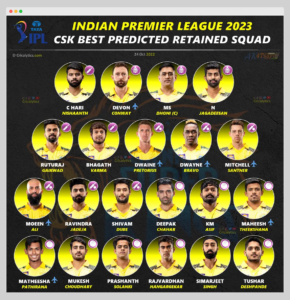

csk team players list 2022
List of players retained by CSK for the 2022 season
If you’re a diehard supporter of the Chennai Super Kings (CSK), you’re likely anxiously awaiting the announcement of the 2022 roster. The anticipation is finally over! CSK has released a list of retained players, and the following are the names to know.
- MS Dhoni: The iconic former Indian captain and CSK’s most successful captain, MS Dhoni, will continue to lead the team from behind the stumps.
- Suresh Raina: The dynamic left-handed batsman and one of CSK’s most consistent performers, Suresh Raina, has been retained for another season.
- Ravindra Jadeja: Known for his all-round abilities, Ravindra Jadeja will continue to be a key player for CSK with his explosive batting and accurate spin bowling.
- Faf du Plessis: The South African cricketer Faf du Plessis has been an integral part of CSK’s batting lineup with his aggressive stroke play and solid technique.
- Dwayne Bravo: The West Indian all-rounder Dwayne Bravo brings immense experience and versatility to the team with his big-hitting batting and effective medium-pace bowling.
- Deepak Chahar: The talented Indian fast bowler Deepak Chahar has impressed everyone with his swing bowling and ability to pick up wickets at crucial moments.
- Ruturaj Gaikwad: The young Indian batsman Ruturaj Gaikwad made a strong impact in the previous season and has been rewarded with a retention for the upcoming season.
- Shardul Thakur: Another promising Indian fast bowler, Shardul Thakur, has shown great potential and will continue to be a valuable asset for CSK.
These are some of CSK’s retained players for the 2022 season. With such a formidable lineup, CSK is certain to entertain their fans once more and put up a fierce fight. Prepare for another exciting IPL season with the Chennai Super Kings!
CSK Released Players
List of players released by CSK ahead of the 2022 season
If you’re a die-hard fan of the Chennai Super Kings (CSK), you must be eagerly waiting to know which players will be a part of the team for the upcoming season. However, before we dive into the list of players who will be donning the yellow jersey, let’s take a look at the players who have been released by CSK.
- Kedar Jadhav: The Indian middle-order batsman was released by CSK following a disappointing previous season. Even though Jadhav was a talented athlete, he failed to make an impression and was released by the team management.
- Harbhajan Singh: The veteran off-spinner had been an integral part of CSK since the inception of the Indian Premier League (IPL). However, due to personal reasons, he opted out of the 2020 season and was subsequently released by the team ahead of the 2022 season.
- Piyush Chawla: Another experienced spinner, Chawla, was also released by CSK. Despite having a successful career in the IPL, Chawla struggled to find his form with CSK and was not retained for the upcoming season.
- Murali Vijay: The stylish opener, who played a crucial role in CSK’s success over the years, was also released by the team. Vijay had been struggling with his form in recent seasons, and CSK decided to part ways with him.
- Shane Watson: The Australian all-rounder announced his retirement from all forms of cricket after the 2020 season. As a result, CSK released him ahead of the 2022 season.
While these players have been released by CSK, it’s important to note that they may still be picked by other teams during the IPL auction. As for CSK, they will be looking to build a strong team around their core players and make a strong comeback in the upcoming season.
CSK New Signings


Details about the new players signed by CSK for the 2022 season
Are you excited to find out which players will represent the Chennai Super Kings (CSK) in the 2022 Indian Premier League (IPL) season? Well you’re in luck! CSK has made some new additions to their team aiming to strengthen their lineup and bring a fresh energy.
One of the standout acquisitions is Moeen Ali, an all rounder from England. Ali brings versatility and experience to the CSK squad with his batting skills and skillful off spin bowling. His ability to score runs quickly and take wickets will undoubtedly benefit the team.
Dwayne Pretorius, a pace bowler from South Africa adds an element to the CSK squad. With his speed and ability to swing the ball Pretorius enhances CSKs bowling attack. His presence will greatly improve their chances of taking wickets and putting pressure on opposing batsmen.
Another valuable addition to the CSK roster is Ben Cutting, an all rounder from Australia. Known for his batting style Cutting brings power and impact to CSKs middle order. His ability to hit boundaries consistently and score runs will be crucial in setting challenging targets or chasing totals.
In addition to these signings CSK has also included some young players, in their team for the upcoming season.
Harishankar Reddy, K.B. Arun Karthik and Bhagath Varma have been granted an opportunity to showcase their skills at the level.
With these additions CSK seems more formidable than ever as they approach the 2022 season. Fans can expect a style of cricket thanks to the teams blend of seasoned players and promising young talents. Get ready, for some thrilling matches as CSK strives to reclaim the IPL championship.
CSK Captain and Vice-Captain
Information about the captain and vice-captain of CSK for the 2022 season
Are you a fan of the Chennai Super Kings (CSK) and excited for the upcoming 2022 season? If so, you might be curious to know who will be leading the team as captain and vice-captain. No worries, we have all the information you need!
In the upcoming 2022 season, the incredible Mahendra Singh Dhoni will once again be leading the CSK team as their legendary captain. Ever since the Indian Premier League (IPL) started, Dhoni has been a crucial member of CSK because of his calm nature and outstanding leadership skills. Wow, under his amazing leadership, CSK has achieved remarkable success by winning multiple IPL championships!
That’s great news! Suresh Raina will be joining CSK as the vice-captain for the upcoming 2022 season, alongside the legendary Dhoni. Raina is an amazing athlete who has been with CSK since the very beginning. He is famous for his amazing weapon and impressive fielding skills. Raina’s leadership experience and qualities make him a great fit to assist Dhoni in team leadership!
With the incredible presence of Dhoni and Raina leading the way, CSK fans can look forward to a strong and united team that aims for greatness on the field. The combination of Dhoni’s tactical expertise and Raina’s aggressive batting approach will definitely make CSK a force to be reckoned with in the upcoming season!
As a CSK fan, get ready for some thrilling matches and unforgettable performances from this amazing dynamic duo! The leadership of Dhoni as captain and Raina as vice-captain will surely inspire the team to aim for another successful season!
Hey there! Don’t forget to mark your calendars because the 2022 IPL season is just around the corner. Get ready to cheer on CSK as they are led by the incredible Mahendra Singh Dhoni and his trusted partner, Suresh Raina. It’s going to be an exciting season!
CSK Batsmen


csk team players list 2022
List of batsmen in the CSK team for the 2022 season
Are you a die-hard fan of the Chennai Super Kings (CSK) and curious to know which batsmen will be representing the team in the upcoming 2022 season? Well, you’re in luck! Here is a list of the talented batsmen who will be donning the yellow jersey for CSK this year.
- MS Dhoni: The legendary former Indian captain needs no introduction. Dhoni’s ability to finish games with his calm demeanor and big-hitting prowess makes him a vital asset to the CSK batting lineup.
- Suresh Raina: Known as Mr. IPL, Raina is one of the most consistent performers in the history of the tournament. His aggressive batting style and ability to score quick runs make him a fan favorite.
- Faf du Plessis: The South African cricketer has been a key player for CSK over the years. Du Plessis’ solid technique and ability to anchor the innings make him a reliable top-order batsman.
- Ruturaj Gaikwad: The young Indian batsman made a strong impression in the previous season with his elegant strokeplay. Gaikwad is expected to continue his good form and provide stability at the top of the order.
- Ambati Rayudu: Rayudu’s versatility as a middle-order batsman adds depth to the CSK batting lineup. His ability to accelerate the scoring rate and play crucial innings under pressure makes him a valuable asset.
- Robin Uthappa: The experienced Indian batsman was acquired by CSK in the IPL 2022 auction. Uthappa’s aggressive batting style and ability to play big shots make him a valuable addition to the team.
- Cheteshwar Pujara: Known for his solid technique and patience, Pujara brings stability to the CSK batting lineup. His ability to occupy the crease and build partnerships will be crucial in setting up big totals.
With such a strong batting lineup, CSK fans can expect fireworks and thrilling performances in the upcoming season. The combination of experience and youth makes the team a formidable force in the tournament.
So gear up, put on your yellow jersey, and get ready to cheer for these talented batsmen as they take on the challenges of the 2022 IPL season!
CSK Bowlers
List of bowlers in the CSK team for the 2022 season
Are you a die-hard fan of the Chennai Super Kings (CSK)? If so, you must be eagerly waiting to know which bowlers will be representing the team in the upcoming 2022 season. Well, we’ve got you covered!
The CSK team management has put together a formidable bowling lineup for the 2022 season. Here is a list of the talented bowlers who will be donning the yellow jersey:
- Deepak Chahar: Known for his swing and accuracy, Deepak Chahar has been a key player for CSK in previous seasons. His ability to take early wickets and restrict the opposition’s run rate makes him a valuable asset to the team.
- Shardul Thakur: Shardul Thakur has established himself as a reliable fast bowler for CSK. With his variations in pace and ability to generate bounce, he can trouble even the best batsmen.
- Lungi Ngidi: The South African pacer, Lungi Ngidi, adds an extra dimension to CSK’s bowling attack. With his raw pace and ability to extract bounce from any surface, he can be a real threat to the opposition.
- Imran Tahir: Imran Tahir, the experienced leg-spinner from South Africa, brings his vast knowledge and skill to the CSK team. His ability to pick up wickets in crucial moments can turn the game in CSK’s favor.
- Ravindra Jadeja: While primarily known for his all-round abilities, Ravindra Jadeja is also a handy left-arm spinner. His accuracy and ability to deceive batsmen with his variations make him a valuable asset in any format of the game.
These are just a few of the talented bowlers who will be representing CSK in the 2022 season. With such a strong bowling lineup, CSK fans can expect some thrilling performances on the field. So get ready to cheer for your favorite team as they take on their opponents with their lethal bowling attack!
CSK All-rounders


List of all-rounders in the CSK team for the 2022 season
If you’re a die-hard Chennai Super Kings (CSK) fan, you’re probably eager to know which all-rounders will be representing your favorite team in the upcoming 2022 season. Well, we’ve got you covered! Here is a list of all-rounders who will be donning the iconic yellow jersey for CSK this year.
- Ravindra Jadeja: Known as the “Rockstar” of CSK, Ravindra Jadeja is a force to be reckoned with. He is not only an exceptional left-handed batsman but also a brilliant left-arm spinner. His explosive batting style and accurate bowling make him a valuable asset to the team.
- Dwayne Bravo: The “Champion” himself, Dwayne Bravo is a seasoned all-rounder who has been an integral part of CSK’s success over the years. With his powerful hitting and clever variations in bowling, Bravo adds depth to the team’s lineup.
- Sam Curran: The young English sensation, Sam Curran, proved his worth in the previous season with his impressive performances. He can contribute with both bat and ball, making him a versatile player for CSK.
- Moeen Ali: A recent addition to the CSK squad, Moeen Ali brings his explosive batting skills and off-spin bowling to the team. His ability to score quick runs and pick up crucial wickets makes him a valuable asset.
- Krishnappa Gowtham: A talented all-rounder from Karnataka, Krishnappa Gowtham was picked up by CSK in the IPL 2022 auction. He is known for his big-hitting abilities and can also chip in with some handy off-spin bowling.
These are just a few of the all-rounders who will be representing CSK in the 2022 season. With such a strong lineup of versatile players, CSK fans can look forward to an exciting and competitive season ahead.
Conclusion
As a fan of the Chennai Super Kings (CSK) team, you must be eagerly awaiting the upcoming 2022 season. The team has always been known for its strong performance and consistent presence in the Indian Premier League (IPL). With a well-balanced squad and experienced players, CSK is expected to continue its winning streak in the upcoming season.
Overall assessment of the CSK team and expectations for the 2022 season
CSK has managed to keep some players from previous seasons ensuring stability and familiarity within the team. The core members, including captain MS Dhoni, Suresh Raina, Ravindra Jadeja and Dwayne Bravo bring a wealth of experience and skill to the table. Their leadership and on field performances have played a role in CSKs success over the years.
In addition to these players CSK has also made strategic additions to strengthen their squad. The team has brought in promising talents like Ruturaj Gaikwad, Sam Curran and Shardul Thakur who have already showcased their abilities in seasons. These young players are expected to play roles in CSKs success during the upcoming 2022 season.
The team management has also focused on bolstering their bowling attack by signing quality bowlers such as Josh Hazlewood and Lungi Ngidi. With a batting lineup and an improved bowling unit CSK is well prepared to face any challenges that come their way in the upcoming season.
Overall as a fan of CSK you can anticipate them continuing their winning legacy in 2022. The teams combination of experience, talent and strong leadership positions them as one of the contenders, for the IPL title.
Get prepared to show your support and cheer, on the CSK team as they face off against their rivals donning their yellow jerseys and displaying their unwavering determination.





“Hello, I’m Manish Dangi, the driving force behind cricketvalue.com. As a dedicated cricket writer and enthusiast, I bring you the latest insights, updates, and stories from the dynamic world of cricket. With a keen eye for detail and a love for the game, I aim to provide a valuable perspective on matches, players, and trends. Feel free to reach out at [email protected]. Let’s celebrate the spirit of cricket together at CricketValue!”
Blog
What is Timeout in IPL
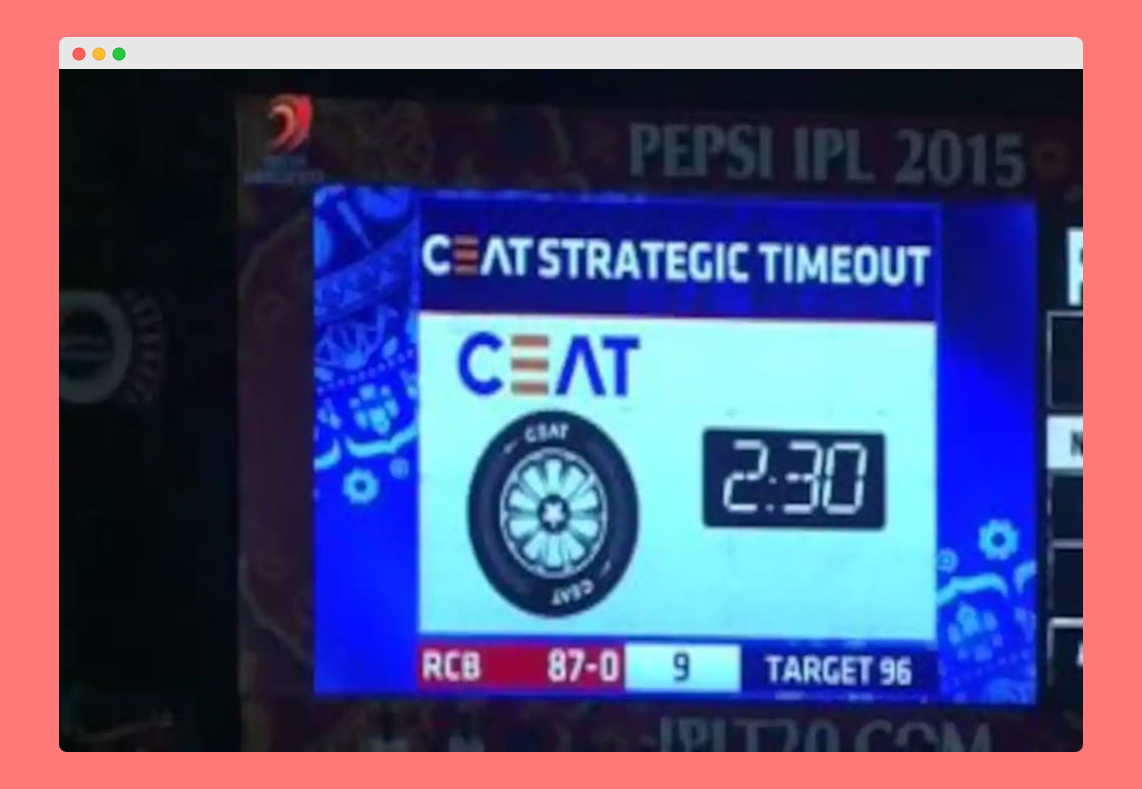

If you’re a fan of the Indian Premier League (IPL), you may have observed that there are strategic pauses known as timeouts during matches. These timeouts are essential to the game and have a significant impact on team strategies and player performance.
Each team is permitted one timeout of two and a half minutes during an IPL match. This timeout is designed to permit teams to regroup, strategize, and make any necessary adjustments to their game plan. It is a chance for the captain and coaching staff to appraise the situation, deliberate strategies, and provide direction to the players.
Timeouts can be called at any time during a match, but they are typically called during crucial moments, such as when a team is struggling, needs to disrupt momentum, or wants to plan its strategy for the forthcoming overs.
During a timeout, players huddle with their captain and instructor to discuss numerous game-related topics. They may evaluate the opponent’s strategy, assess their own performance, identify areas for development, and devise new strategies to win the match.
Timeouts also provide participants with much-needed mental and physical rest, allowing them to recharge. It is an opportunity for them to regroup, calm their anxieties, and regain composure before resuming play with renewed vigor.
In addition to benefiting the teams directly engaged in the game, timeouts also provide spectators with entertainment. Fans anxiously anticipate how teams will adjust their strategies during these pauses, which adds an element of suspense and anticipation.
The strategic timeout lasts for a maximum of two and a half minutes. During this time, the players gather with the coaching staff to discuss the game plan, assess the situation, and make any necessary adjustments to their approach.
Purpose and Rules of Timeout in IPL
In the exciting and action-packed world of IPL cricket, timeouts are really important for strategic planning and taking care of the players. Sure, let’s explore the purpose and rules behind this important aspect of the game together!
During an IPL match, each team can enjoy a friendly timeout of two and a half minutes. The main goal of this timeout is to give teams a chance to come together, talk about strategies, and make important decisions. It gives captains, coaches, and players the opportunity to come up with strategies, analyze the game situation, and maybe even adjust their approach.
However, just a friendly reminder that timeouts can only be taken during specific periods of the match. During the first innings, the batting team has the option to request a timeout between overs 6 and 9. Hey there! Just wanted to let you know that during the second innings of a cricket match, the fielding team has the option to take a timeout between overs 11 and 16. Hope that helps!
During the timeout, players can take a break and gather near their dugouts. The coaching staff is here to offer helpful guidance and advice to players, while captains can make any necessary changes to their game plan. It’s also a great chance for players to stay hydrated, take a breather, and get mentally ready for the exciting challenges ahead!
Timeouts are totally optional, and teams can choose whether or not they want to take a break. However, many people view it as a valuable strategic tool that can really make a difference for teams, helping them gain an advantage or keep their winning streak going.
In a nutshell, timeouts in IPL matches play a vital role in helping teams come together, plan their strategies, and make some key decisions. They offer a much-needed break from the intensity of the game and give players a chance to regroup and focus on winning.
Duration of Timeout in IPL


What is Timeout in IPL
If you’re a fan of the Indian Premier League (IPL) you might have noticed that during matches there are these strategic breaks called timeouts. These timeouts give teams a chance to regroup plan their strategies and make decisions. Let’s take a look at how long these timeouts last in IPL matches and how teams and officials manage them.
In an IPL match, each team is allowed to have a maximum of two timeouts. Each timeout lasts for two and a half minutes. These timeouts can be taken at any point during the match. There are some restrictions. For example teams cannot take a timeout within the six overs of their innings or during the last two overs.
The team captain and coaching staff are responsible, for managing these timeouts. They decide when it’s the time to call for one based on the game situation and their strategy. Once a timeout is called players gather together to discuss tactics analyze how the opposition is playing and make any adjustments.
It’s important to note that during a timeout players are not allowed to leave the field of play. They must stay within the ropes until the timeout is over. Additionally, umpires and match officials make sure that everyone follows the rules regarding the duration of each timeout strictly.
Timeouts have an impact on IPL matches as they give teams an opportunity to evaluate their strategies make any necessary adjustments and motivate their players. They bring an element and keep fans engaged adding excitement to the game throughout.
To sum up timeouts in IPL matches last for two and a half minutes. Are managed by both teams and officials. They serve as breaks for teams to regroup, strategize and make important decisions. These timeouts greatly enhance the experience of watching an IPL match, for both players and fans alike.
Strategic Importance of Timeout in IPL
In the paced and high pressure world of the Indian Premier League (IPL) teams often rely on timeouts as a strategic tool to gather themselves reassess their game plan and make important decisions. These timeouts offer a break during the match where teams can come together consult their coaches and discuss tactics.
During a timeout teams have the chance to analyze the state of the game evaluate how their players are performing and identify any weaknesses or areas for improvement. This allows them to make adjustments to their strategy and tactics. Coaches play a role during timeouts by offering guidance sharing insights and motivating the players.
Timeouts become particularly crucial when tense moments arise or when quick decisions need to be made. They provide teams, with an opportunity to calm down refocus their efforts and come up with plans to gain an advantage in the game. It’s not uncommon for teams to strategically use timeouts as a way of interrupting the opposition’s momentum or disrupting their rhythm.
Furthermore timeouts also serve as a chance for players to recharge both physically and mentally. The intensity of IPL matches can take a toll on their well being so these breaks offer valuable moments for players to catch their breaths hydrate themselves properly and regain composure.
In the game of IPL timeouts play a role in determining the final result of matches. They provide teams with opportunities to plan their strategies make essential changes and give players a much-needed break. By using these pauses teams can gain an advantage over their rivals and improve their prospects of triumphing, in the tournament.
Examples of Timeout Usage in IPL
Timeouts in the Indian Premier League (IPL) are crucial strategic breaks that teams can utilize to regroup, plan their next moves, and make necessary adjustments. Here are a few instances where teams have effectively used timeouts to their advantage:
- Tactical Discussions: During a timeout, teams often gather to discuss tactics and strategies. In the 2019 IPL final, the Mumbai Indians used a timeout to analyze the match situation and devise a plan to counter the Chennai Super Kings’ bowling attack. This strategic discussion helped them successfully chase down a challenging target.
- Momentum Shift: Timeouts can also be used to break the momentum of the opposing team. In a match between the Sunrisers Hyderabad and the Kolkata Knight Riders, the Knight Riders called for a timeout when the Sunrisers were on a scoring spree. This break disrupted their rhythm and allowed the Knight Riders to regroup and eventually win the match.
- Injury Management: Timeouts can be beneficial for managing player injuries. In a game between the Royal Challengers Bangalore and the Kings XI Punjab, RCB’s captain called for a timeout when one of their key players suffered an injury. This break provided an opportunity for medical attention and allowed the team to reassess their strategy without compromising player safety.
- Strategic Time Wasting: Teams sometimes strategically use timeouts as a means of breaking their opponent’s rhythm or delaying play. By calling for timeouts at crucial moments, teams can disrupt the flow of the game and create psychological pressure on their opponents.
In conclusion, timeouts in IPL matches serve as valuable breaks that teams can use strategically to analyze situations, regroup, and make necessary adjustments. Whether it’s for tactical discussions, momentum shifts, injury management, or strategic time wasting, teams have shown that effective utilization of timeouts can greatly impact the outcome of a match.
Impact on Momentum and Game Dynamics
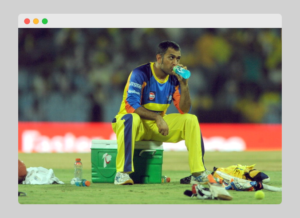

What is Timeout in IPL
If you love cricket, you’ve likely heard of the Timeout in the Indian Premier League (IPL). Have you ever thought about how taking a short break can affect the flow of a match and possibly shake things up in the game? Sure, let’s dive in and explore together!
During an IPL match, each team is given the opportunity to take a Timeout of up to two and a half minutes. This break is a great chance for teams to come together, plan, and make any needed changes. Assessing the current state of the game and planning for the upcoming overs is really important at this stage!
One great thing about a Timeout is that it has the potential to disrupt the momentum of the opposing team. If a team is doing really well, taking wickets or scoring runs consistently, a well-timed Timeout can help break their rhythm and give the other team a chance to regain control. It gives players a chance to relax, regroup, and return with fresh energy and determination.
Additionally, a Timeout can also enhance the dynamics of the game by allowing for strategic discussions. Captains and coaches have the amazing ability to analyze their players’ performance, spot any weaknesses in the opposition’s strategy, and come up with new plans to tackle them. During these breaks, important decisions are made, like adjusting batting orders or changing bowling tactics.
However, I wanted to mention that not all Timeouts have an immediate impact on the game. Sometimes teams might decide to take a Timeout just to mix things up or throw off their opponents’ focus. The psychological aspect of a Timeout is really important, so we shouldn’t underestimate it.
In my opinion, Timeouts in IPL matches have the potential to make a big impact on momentum shifts and change the dynamics of the game. They offer teams a chance to come together, plan, and make any needed changes. Whether it’s a strategic choice or a clever move, taking a Timeout can have a big impact on how a game turns out.
Controversies and Criticisms Surrounding Timeout in IPL


Since their implementation, timeouts in the Indian Premier League (IPL) have been the subject of controversy and criticism. Let’s take a closer look at some of the most pressing issues surrounding the implementation and utilization of timeouts in the IPL.
A significant criticism is the impact on the game’s rhythm. Some contend that timeouts disrupt the momentum and cadence of the game, causing both participants and spectators to lose interest. Occasionally, the strategic pauses can feel extraneous, particularly when they occur immediately after a wicket or a boundary.
Another issue is the duration of timeouts. Originally implemented as a two-and-a-half-minute pause, timeouts were extended to five minutes later on. Critics contend that this lengthy pause disrupts the flow of the game and can cause viewers to lose interest.
There have also been disputes regarding the duration and application of timeouts. Some teams have been accused of manipulating match situations or giving their players an unjust advantage by strategically utilizing their timeouts. This has sparked discussions about whether there should be stricter rules regarding when and how timeouts can be taken.
In addition, critics assert that timeouts allow for excessive commercialization. Some believe that the prominence of sponsors during these intervals detracts from the essence of the game and transforms it into a marketing spectacle.
While the IPL timeouts were instituted with positive intentions, they have been met with criticism and controversy. The impact on the game’s flow, the duration of timeouts, timing and utilization concerns, and commercialization issues have all contributed to these debates regarding timeouts in the IPL.
Timeout vs Other Breaks in IPL Matches


When watching an IPL match, you may have noticed various breaks that occur during the game. One such break is the Timeout. But how does it differ from other breaks like the drinks break or innings break? Let’s take a closer look.
The Timeout in IPL matches is a strategic break taken by the teams. Each team is allowed to take one Timeout of two and a half minutes during their innings. The primary purpose of the Timeout is to allow the teams to regroup, discuss strategies, and make necessary changes to their gameplay. It gives the players and coaches a chance to analyze the current situation, plan their next moves, and address any issues that may have arisen during the match.
On the other hand, breaks like the drinks break and innings break serve different purposes. The drinks break is a short break taken to provide hydration to the players. It usually lasts for a few minutes and allows the players to refresh themselves before continuing with the game. The innings break, on the other hand, occurs between the two innings and gives both teams a chance to rest, strategize, and prepare for their respective batting or bowling innings.
In terms of impact on the game, the Timeout can be crucial. It allows teams to assess their performance, make tactical decisions, and potentially turn the tide of the match. The drinks break and innings break, although important for player well-being and game logistics, do not have a direct impact on gameplay strategy.
In conclusion, while all breaks in IPL matches serve their purpose, the Timeout stands out as a strategic opportunity for teams to regroup and make necessary changes during their innings. So, next time you see a Timeout being taken, keep an eye out for the potential game-changing decisions that may follow.
Conclusion
To sum up the Timeout in IPL matches plays a role in enhancing teams’ strategic planning and decision-making. It offers a chance for teams to come together reevaluate their game plan and make adjustments to gain an advantage.
During the Timeout teams can discuss their strategies assess the state of the match and identify any weaknesses or opportunities that they can capitalize on. Coaches and captains can offer insights and guidance to keep the players focused and motivated.
The Timeout also serves as a breather for players both physically and mentally. The paced nature of IPL matches can be mentally exhausting so the Timeout provides a much needed break to recharge and refocus.
Moreover the Timeout acts as a platform for teams to make decisions like changing batting order or introducing new bowlers. Captains get an opportunity to evaluate players performance and make well informed decisions based on the current situation.
All all the Timeout in IPL matches is not just a pause, in play; it is an essential strategic tool. It enables teams to regroup strategize effectively and make decisions that can ultimately influence the matchs outcome.
So the time you’re watching an IPL match and witness a Timeout being called keep in mind how important it is, in influencing the direction of the game.





“Hello, I’m Manish Dangi, the driving force behind cricketvalue.com. As a dedicated cricket writer and enthusiast, I bring you the latest insights, updates, and stories from the dynamic world of cricket. With a keen eye for detail and a love for the game, I aim to provide a valuable perspective on matches, players, and trends. Feel free to reach out at [email protected]. Let’s celebrate the spirit of cricket together at CricketValue!”
Blog
Difference Between A Wide And a No-Ball?


Welcome to the fascinating world of cricket – a sport that stirs millions of hearts all over the globe. Unveiling this grand game’s intricate details can enhance comprehension and appreciation, especially among beginners and fans. Two aspects that sometimes create confusion are – ‘what is a wide’ and ‘what is a no-ball.’
Explanation of wide and no-ball in cricket
A “wide” is a throw that gets too far away from the bowler for the batter to have a fair shot at it. Most of the time, this happens when the ball goes over the back of the batter without touching his bat or body. If the ball goes wide, the umpires give your team an extra run and don’t count it toward the over.
On the other hand, a “no-ball” is an illegal delivery because the bowler broke one of the rules. This could happen if the bowler oversteps or if he or she throws a full ball above waist height without it moving. This is called a beamer. Just like a “wide,” a “no-ball” gives your team an extra run and lets the batter score runs without worrying about getting out, except by being run out. Plus, the next pitch is a free hit, so there is no way to get rid of the batter except by running out of time.
At first glance, both might look like just different ways to follow the rules. But knowing cricket’s strategic depths could be a lot easier if you knew these little things. So make sure you know about these technical details. Cricket isn’t just a game, after all; it’s a feeling!
Wide Ball
If you’re a cricket enthusiast, you may have come across the terms “wide ball” and “no-ball.” But do you know the difference between the two? Let’s dive into the specifics and unravel the mystery.
Definition and rules of a wide ball
When a bowler releases the ball, it must pass within the batsman’s reach on the leg side, without bouncing on his leg. If the ball passes outside this range, it is deemed a wide ball. The exact definition may vary slightly depending on the cricket format being played, but the general principle remains the same.
The umpire is responsible for determining whether a ball is wide or not. They observe each delivery and make an instant judgment based on its trajectory in relation to the batting crease.
Consequences and penalties for bowling a wide ball
When a bowler bowls a wide ball, some extra runs are added to the batting team’s score. The number of extra runs awarded can vary depending on the cricket format and competition rules. Also, we need to bowl an extra delivery to make up for the wide ball.
For the bowler, there are also some consequences to consider. If you keep bowling wide balls, there might be some consequences like being taken out of the attack, getting replaced by another bowler, or facing disciplinary action from the cricket board. Just a heads up!
It’s really important for both bowlers and batsmen to know exactly what counts as a wide ball. This helps make sure the game is fair and keeps its integrity intact.
Just a friendly reminder, both a no-ball and a wide ball give some extra advantages to the batting team. Hey there! The next time you’re enjoying a cricket match, make sure to keep an eye out for these super interesting quirks of the game. Happy watching!
No-Ball


When it comes to cricket, understanding the different terms and rules can be a little tricky, especially if you are new to the sport. So, let’s dive into the difference between a wide and a no-ball!
Definition and rules of a no-ball
A no-ball is a type of delivery that is deemed illegal in cricket. It occurs when the bowler oversteps the front line of the crease or delivers the ball above waist height. Additionally, if a bowler bowls an illegal delivery such as throwing or underarm bowling, it is also considered a no-ball.
The rule of a no-ball is in place to ensure fair play and safety for the batsman. When a no-ball is bowled, it is immediately signaled by the umpire by extending their arm horizontally. The batsman cannot be dismissed on a no-ball, except in certain cases like a run-out or stumping.
Consequences and penalties for bowling a no-ball
Bowling a no-ball comes with its consequences. Firstly, when a no-ball is bowled, it adds one run to the batting team’s score. This run is called an extra and goes on top of any other runs scored off that delivery.
In addition to the extra run, the batsman on strike during the no-ball becomes “not out.” This means that even if they get out on that delivery, they will continue their innings as if nothing happened.
Furthermore, if a bowler bowls several successive no-balls, they may face penalties such as being removed from bowling or even being suspended from playing in future matches.
Understanding the difference between a wide and a no-ball is important when watching or playing cricket. It adds depth to your knowledge of the game and allows you to follow along with all the action happening on the field. So, next time you’re watching a match, keep an eye out for those no-balls and wides!
Differences between Wide and No-Ball
When it comes to cricket, understanding the finer details of the game can be just as important as knowing the basic rules. One such detail is differentiating between a wide ball and a no-ball. While they may seem similar, they have distinct characteristics and consequences.
Explanation of the main differences between wide and no-ball
Wide Ball: A wide ball occurs when the bowler delivers a ball that is too wide for the batsman to play a legitimate shot at. It is considered an illegal delivery and results in an extra run being awarded to the batting team. The ball is not counted as one of the six deliveries in an over, and it must be re-bowled.
No-Ball: On the other hand, a no-ball is called when the bowler commits a certain type of infringement, such as overstepping the bowling crease or delivering the ball above waist height. Like a wide ball, a no-ball is also considered illegal and results in an extra run for the batting side. However, unlike a wide ball, it is counted as one of the six deliveries in an over, and it allows the batsman to continue playing without being dismissed in specific circumstances.
Impact on the game and scoring
The number of wide balls and no-balls bowled during an innings can have a significant impact on the game’s outcome. Both types of deliveries provide opportunities for the batting team to score additional runs. However, while wides are relatively easier to score off since they do not count as legitimate deliveries, no-balls offer even greater scoring opportunities and can result in free hits where the batsman cannot be dismissed.
Understanding these differences will not only enhance your knowledge of the game but also give you insight into how these deliveries can influence match dynamics. So, the next time you watch a cricket match, keep an eye out for wide balls and no-balls and enjoy the strategic nuances they bring to the game.
Umpire Signals
If you’re a cricket enthusiast, you might have come across confusing terms like “wide” and “no-ball” during a match. So, what exactly is the difference between these two? Let’s dive into the details!
Description of the umpire signals for wide and no-ball
Wide: When a bowler delivers a ball that goes outside the marked crease lines on either side of the batsman, it is considered a wide. The umpire makes this call by extending both arms horizontally. A wide ball results in an extra run being added to the batting team’s total, and the delivery itself is repeated.
No-Ball: Unlike a wide ball, a no-ball is called when the bowler oversteps the front line of the crease, indicating an illegal delivery. The umpire signals this by extending one arm horizontally. A no-ball can also be called for other reasons, such as the ball bouncing more than once before reaching the batsman or for having fielders in illegal positions. When a no-ball is called, an extra run is awarded to the batting team, and the delivery is repeated.
Knowing these umpire signals and understanding their differences can enhance your enjoyment of watching cricket matches. It allows you to follow along with the decisions made by the officials and understand how they impact the game.
So next time you’re watching a cricket match and hear these terms being mentioned, you’ll have a better understanding of what they mean and how they affect the game.
Common Mistakes and Misunderstandings
Clarification of common mistakes and misunderstandings related to wide and no-ball
When it comes to cricket, there are some terms and rules that might seem a bit confusing, especially if you’re new to the game. But don’t worry, I’m here to help you understand them better! There can be some confusion when it comes to the terms “wide” and “no-ball.” Sure, let’s dive deeper into the distinction between the two to help clarify any confusion you might have.
A wide is when the bowler delivers the ball too far away from the batsman’s reach, going too wide of the stumps. It’s actually seen as a penalty for the bowler because it gives the batting team an advantage. The umpire is there to make sure that the delivery is fair. They use certain criteria, like if the ball goes outside the marked lines or if it’s too high for the batsman, to decide if it’s a wide.
On the other hand, a no-ball is a delivery that is considered illegal for various reasons. Sure! Some examples of instances in cricket can include when the bowler accidentally steps over the front crease while delivering the ball, bowls a full toss above waist height, or has an incorrect bowling action. When a no-ball is called, it’s a friendly reminder that an extra run is awarded to the batting team, and the ball gets a chance to be bowled again.
It’s great to keep in mind that wides and no-balls are both beneficial for the batting team, but they are awarded for different reasons. Sure! Wides are determined by the location of the delivery, while no-balls are called for specific bowling infractions.
Hey there! If you want to up your cricket game and follow matches more effectively, it’s worth getting a handle on the difference between wide and no-ball. It’ll give you a better understanding of the sport. Keep up the great work! Hey there! Next time you’re enjoying a cricket match, make sure to keep an eye out for these terms. They play a crucial role in determining the outcome of each delivery. Happy watching!
Strategies and Tactics
If you’re a cricket enthusiast, you might have come across the terms “wide” and “no-ball” during a match. These terms refer to specific deliveries by the bowler, which can have a significant impact on the game. Understanding the difference between a wide and a no-ball can help both bowlers and batsmen strategically navigate the game.
How wide and no-ball can be used strategically by bowlers and batsmen
As a bowler, knowing when to bowl a wide or a no-ball can give you an advantage over the batsman. Here’s how:
- Wide: A wide delivery is one that is deemed too far outside the batsman’s reach, on the off side or the leg side. Bowling a wide intentionally can be used as a strategic move to push the batsman off balance and force them to play risky shots, potentially resulting in wickets.
- No-ball: A no-ball is when the bowler delivers the ball without any part of their front foot behind the popping crease. Intentionally bowling a no-ball is rare, but it can be used tactically in specific situations. For example, if there is a dominant batsman on strike, a bowler might intentionally bowl a no-ball to prevent the batsman from scoring freely off that delivery.
For batsmen, understanding how to react to wides and no-balls is equally important:
- Wide: When faced with a wide delivery, batsmen have the option of letting it go to earn an extra run for their team or attempting to hit it for boundaries. Choosing the right strategy depends on the batsman’s skill level and game situation.
- No-ball: When a bowler bowls a no-ball, it provides an opportunity for the batsman to score freely without the risk of dismissal. Batsmen can use this advantage to play aggressive shots and accumulate runs, knowing that they cannot be out from that delivery.
Understanding the tactical implications of wides and no-balls in cricket can significantly impact a team’s performance and potentially sway the outcome of a match. By strategizing and leveraging these deliveries effectively, bowlers and batsmen can gain an upper hand in the game.
Recent Controversies and Rule Changes
Discussion of recent controversies and rule changes related to wide and no-ball
Have you ever found yourself confused about the difference between a wide and a no-ball in cricket? Well, you’re not alone! These terms can be quite tricky to understand, but fear not—we’re here to help clear things up.
A wide is called when the bowler delivers a ball that is outside the batsman’s reach, beyond the line of the crease on the off side. It is essentially a penalty for the bowler, as it gives an advantage to the batsman. The umpire makes the call based on their judgment of whether or not the ball could have been played by the batsman.
On the other hand, a no-ball is called when the bowler commits a certain violation, such as overstepping the popping crease or bowling a full toss above waist height. When a no-ball is called, it offers an advantage to the batsman as well. The delivery is considered illegal, and the batting team is usually awarded an extra run. Additionally, no-balls often result in free hits—a chance for the batsman to hit without fear of being dismissed.
Recent controversies surrounding wide and no-ball calls have led to changes in the rules to ensure fairness and clarity. The use of technology like Hawk-Eye and ball-tracking systems has helped umpires make more accurate decisions. Furthermore, there has been discussion about introducing automated systems to call wides and no-balls to eliminate any human error from these decisions.
Understanding the difference between wides and no-balls can enhance your cricket-watching experience. So, next time you catch a match, keep an eye out for those wide deliveries and no-ball violations—it’ll make following the game even more exciting!
Summary of the key differences between wide and no-ball in cricket
Wide: In cricket, a wide is a delivery that the umpire deems to be too far away from the batsman for them to be able to hit it fairly. This usually happens when the ball is too far outside the batsman’s reach or too high above their head. A wide results in adding one run to the batting team’s score, and an extra delivery is bowled.
No-Ball: On the other hand, a no-ball occurs when a bowler oversteps the crease while delivering the ball, bowls an illegal delivery (such as throwing instead of bowling), bounces more than once before reaching the batsman, or has too many fielders outside the designated fielding area. A no-ball adds one run to the batting team’s score, and an extra delivery is also bowled.
Importance of understanding these rules for players and spectators alike
For cricket players, understanding these rules is vital to avoid penalties and ensure fair gameplay. It allows them to adapt their strategies accordingly and make informed decisions during matches.
For spectators, knowing the difference between a wide and a no-ball enhances their overall cricket experience. It adds excitement as they can cheer for their team when runs are added due to wides or no-balls. Additionally, understanding these rules helps spectators follow commentaries and discussions better, deepening their understanding and enjoyment of the game.
So, next time you’re watching or playing cricket, keep these differences in mind. It will elevate your understanding and appreciation of the sport.





“Hello, I’m Manish Dangi, the driving force behind cricketvalue.com. As a dedicated cricket writer and enthusiast, I bring you the latest insights, updates, and stories from the dynamic world of cricket. With a keen eye for detail and a love for the game, I aim to provide a valuable perspective on matches, players, and trends. Feel free to reach out at [email protected]. Let’s celebrate the spirit of cricket together at CricketValue!”
-



 Batting Tips11 months ago
Batting Tips11 months agoIs Stumping Allowed in Free Hit?
-



 Batting Tips9 months ago
Batting Tips9 months ago13 Proven Power Hitting Techniques to Elevate Your Cricket Batting Skills
-



 Batting Tips11 months ago
Batting Tips11 months agoFree Hit in Cricket – Rules & Penalty
-



 Knowledge Base7 months ago
Knowledge Base7 months agoMost Runs in Women’s Cricket | Batting Records
-



 Player Stats10 months ago
Player Stats10 months agoWho is MS Dhoni’s Wife- All You Need to Know
-

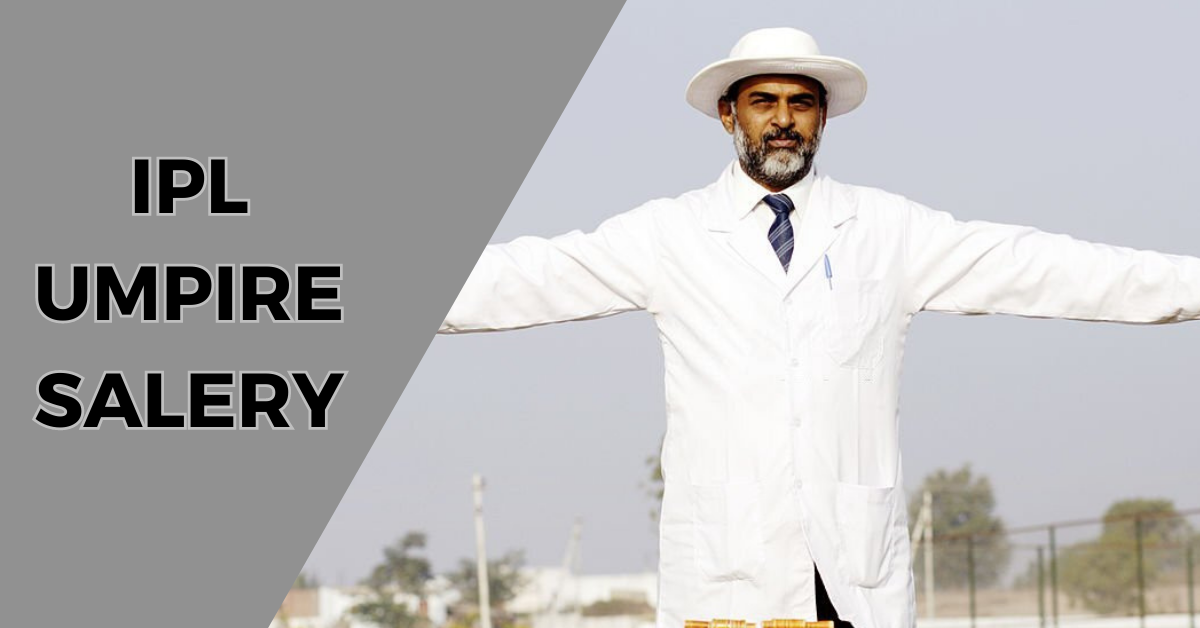

 IPL11 months ago
IPL11 months agoWhat Is IPL Umpire Salary? 1.98L?
-

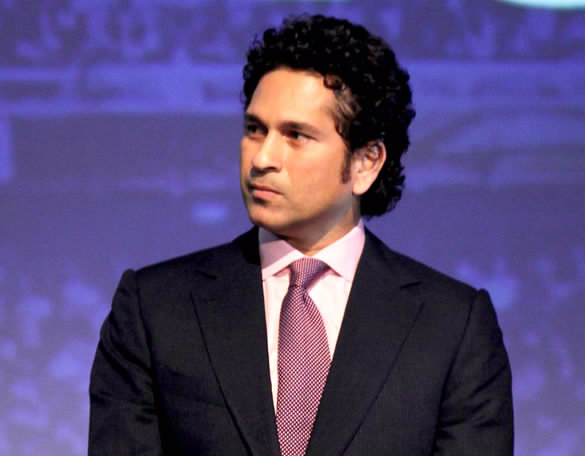

 Bat11 months ago
Bat11 months agoSachin Tendulkar’s Bat- All You Need to Know
-



 Blog10 months ago
Blog10 months agoDifference Between A Wide And a No-Ball?

